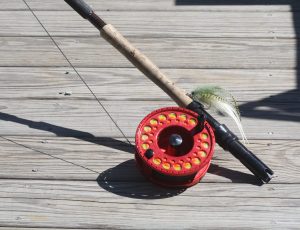Fly fishing for bluefin tuna is an endeavor that demands meticulous preparation and a deep understanding of the fish’s feeding behavior. The process begins well before the boat is launched, with careful selection of gear and an informed strategy that considers the habits of these powerful predators.
The Early Morning Launch
The pursuit of bluefin often starts with a pre-dawn launch, as was the case on a memorable trip from Buzzards Bay through Cape Cod Canal to Stellwagen Bank. The morning began with a search for telltale signs of tuna activity—bird flocks, surface schools of sand eels, and breaching whales. These indicators often precede the arrival of the tuna.
A significant moment occurred when a large school of birds signaled the presence of a bait ball under attack by tuna. Despite arriving just after the initial frenzy, the decision was made to wait patiently for the tuna to return. This patience paid off when the tuna resumed feeding, leading to a successful 75-foot cast into the action. A long, slow strip of the fly enticed a bluefin to strike, initiating a 28-minute battle that culminated in the catch of a 55-inch bluefin tuna.

The Importance of Preparation
Fly fishing for bluefin requires specialized equipment. The angler must be equipped with the appropriate rod, reel, and line based on the expected size of the fish. For example, school bluefin, ranging from 27 to 47 inches, can be targeted with a 12-weight rod paired with a reel capable of holding 300 to 400 yards of backing. For larger bluefin, such as those up to 59 inches, a 14- or 15-weight rod is recommended.
In addition to the right tackle, the pre-fishing preparation should include deciding whether the catch will be harvested or released, and ensuring all permits and equipment, such as landing gear and ice, are ready.

Bait Behavior and Strategy
Bluefin tuna in the Northeast feed on various prey, including sand eels, herring, mackerel, and squid. The type of bait they are feeding on will influence their behavior and the angler’s approach. When tuna feed on faster baitfish like mackerel or herring, it can be challenging to get within casting range. However, when they target slower prey like sand eels, there’s a greater chance to present a fly.
Choosing the right fly is critical, with the goal being to match the size, color, and profile of the baitfish. Bluefin have sharp vision, and a fly that closely mimics the natural prey stands a better chance of drawing a strike.
The Battle
Once hooked, bluefin tuna are known for their explosive speed and power. The initial run can exceed 40 miles per hour, making line management crucial. The angler must clear the line to the reel without any tangles and set the drag correctly to avoid breaking the leader.
The fight with a bluefin is typically characterized by several long runs followed by a deep, vertical battle under the boat. Success in this phase requires a combination of leverage, technique, and stamina. Proper rod handling, effective communication with the helm, and strategic pressure are all vital to bringing the fish to the surface.
The ultimate reward for all this preparation and effort is the opportunity to experience the thrill of landing one of the ocean’s most formidable fish on a fly rod. Whether fishing with a partner or guided by a seasoned charter captain, fly fishing for bluefin tuna offers the potential for a story worthy of a lifetime. The 2022 season showed promising signs, with an abundance of bluefin in various size classes, setting the stage for exciting opportunities in future seasons.
Images/Source: OnTheWater





